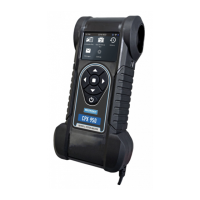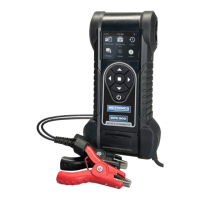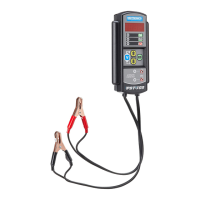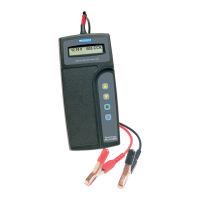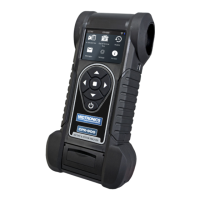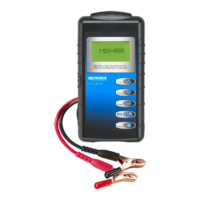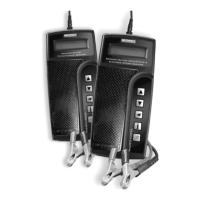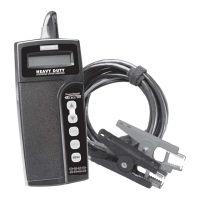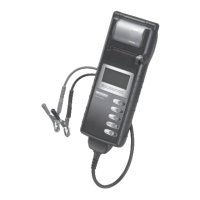21
Chapter 5: Test PreparationEXP-800
Inspecting the Battery
Before starting the test visually inspect the battery for:
• Cracked,buckled,orleakingcase.Ifyouseeanyofthese
defects, replace the battery.
• Corroded,loose,ordamagedcablesandconnections.Re-
pair or replace them as needed.
• Corrosiononthebatteryterminals,anddirtoracidonthe
case top. Clean the case and terminals using a wire brush
and a mixture of water and baking soda.
• Lowelectrolytelevel.Iftheelectrolytelevelistoolow,add
distilled water to ll up to 1/2 above the top of the plates
and fully charge the battery. Do not overll.
• Corroded or loose battery tray and hold-down xture.
Tighten or replace as needed.
Testing Out-of-Vehicle (Battery Test)
The preferred battery test location is in the vehicle. However, if
you plan to test out of the vehicle:
• Always disconnect the negative cable from the battery
rst and reconnect it last.
• Alwaysuseacarrytoolorstraptolift and transportthe
battery.
!
CAUTION: When testing side-post or Group 31
batteries, always use lead terminal adapters pro-
vided with the EXP—do not test at the battery’s
steel bolts. To avoid damage, never use a wrench
to tighten the adapters more than 1/4 turn. Fail-
ure to properly install lead terminal adapters, or
using adapters that are dirty or worn, may cause
false test results.
Testing In-Vehicle (System Test)
Before starting the test, inspect the alternator drive belt. A belt
that is glazed or worn, or lacks the proper tension, will prevent
the engine from achieving the rpm levels needed for the test.
The preferred test position is at the battery posts. If you must
test at a remote-post location, it should have both a positive
and negative post. Otherwise, you must remove the battery
and perform a System Test.
At the start of the test, place the vehicle transmission in PARK,
make sure all vehicle accessory loads are o, the key is not in
the ignition, and the doors are closed.
Connecting to the Battery
Connect the red clamp to the positive (+) terminal and the
black clamp to the negative (–) terminal.
If you connect the clamps in the wrong polarity (red to
negative or black to positive), the analyzer displays CLAMPS
REVERSED! Reconnect the clamps.
To make sure both sides of the clamps are gripping the
terminals, rock the each clamp back and forth. A poor
connection will prevent testing, and the analyzer displays
the message CHECK CONNECTION. If the message reappears
after you have correctly reconnected the clamps, clean the
terminals and reconnect
Chapter 5: Test Preparation
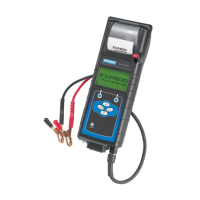
